


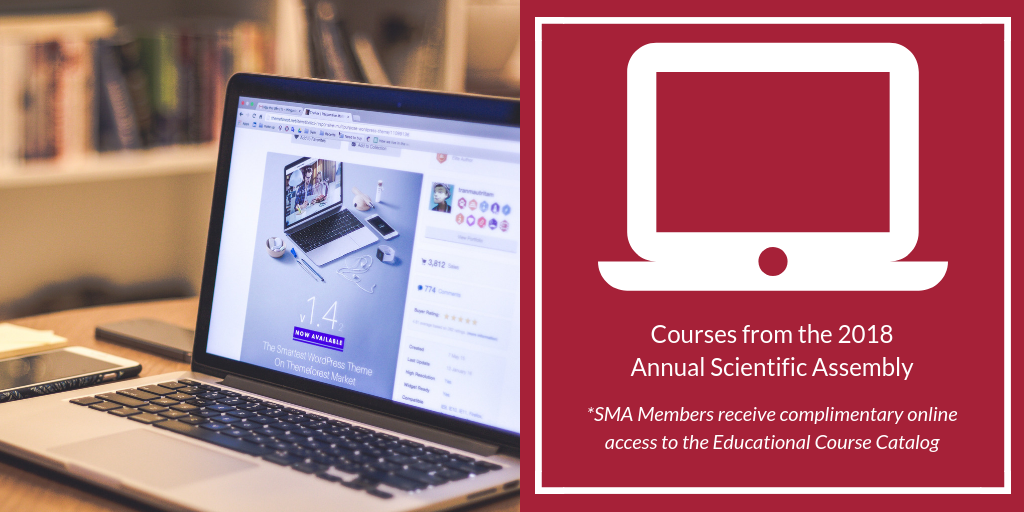
Pharmacological Therapeutic Advances: From New Pathways to Patient Care
Price:$10.00 Ι Credits: .50
Introduction of new drugs in the standard of care continues at a significant rate. Some of these discoveries represent the identification of ways to manipulate novel pathways in disease states. The time lag between discovery and eventual implementation may be significant.
Overview of Common Digestive Disorders: Epidemiology and Treatment Guidelines
Price:$10.00 Ι Credits: .75
Gastrointestinal disorders are responsible for many patient visits and hospitalizations. This overview, followed by interactive case discussions, will inform physicians about current epidemiology and guidelines for screening and treatment of five common issues related to common digestive disorders, including those of the esophagus, stomach, colon, pancreas, and liver.
Use of Point-of-Care Ultrasound in Cardiopulmonary Disease
Price:$10.00 Ι Credits: .75
Despite numerous studies documenting the benefits of an ultrasound-enhanced bedside examination, focused or "point-of-care" ultrasound (POCUS) is underutilized, particularly among hospitalists and general practitioners. Cardiopulmonary disease is a leading cause of morbidity and mortality as well as healthcare spending. Use of cardiopulmonary POCUS has significant potential to enhance diagnostic accuracy for these conditions and improve patient care.
Price:$10.00 Ι Credits: 1.00
In the world of sports medicine, there are, at present, best practices that have been learned in numerous venues from the Olympic Games to high school and age group sports as well as professional athletics. The ability to deliver organized care and screening to the active population is imperative for appropriate safety, clinical interventions, and outcomes.
Newer Orthopedic Modalities & Therapies
Price:$10.00 Ι Credits: .75
New and intriguing developments that are in trials will potentially improve, in the future, the ability to appropriately use biologics (stem cells) and other treatments. Examples will be given of several studies that are ongoing to scientifically delineate the safety and effectiveness (or not) of these biologics, and techniques.
Individual Healing in Health Care: Prevent Burnout Through Resilience Building Strategies
Price:$10.00 Ι Credits: .50
Physician burnout is currently recognized as a significant and growing crisis for the healthcare workforce. Over 65% of physicians are experiencing at least one symptom of burnout, and providers have almost a 100% prevalence of burnout over their career lifetime.
The National Academy of Medicine Action Collaborative on Clinician Well-Being and Resilience
Price:$10.00 Ι Credits: .75
Burnout is a syndrome characterized by a high degree of emotional exhaustion and depersonalization (ie, cynicism), and a low sense of personal accomplishment at work. Burnout has been linked to self-reported errors, patient dissatisfaction, and a decreased ability to express empathy. Physicians have twice the risk of burnout as the general population and physician satisfaction with work life balance is one-third less than the general population.
Physician Burnout Bundle Course
Price:$25.00 Ι Credits: 1.75
Burnout bundle course that includes "The National Academy of Medicine Action Collaborative on Clinician Well-Being and Resilience" and "Individual Healing in Health Care: Prevent Burnout Through Resilience Building Strategies" as well as a special panel discussion.
An Introduction to Rheumatologic Diseases: Which Ones to Treat, Which Ones to Refer
Price:$10.00 Ι Credits: 1.00
There is a nationwide shortage of rheumatologists; this shortage is even more acute in the southeastern United States, where there is only one rheumatologist for every 60,000 population. As a result, many patients have to travel hours to the closest rheumatologist, and quite often the waiting time can be several months.
Cardiovascular Disease: Now is the Time to Act Globally
Price: FREE Ι Credits: .75
Cardiovascular disease is the leading cause of death in the world. Despite the presence of effective strategies, clinicians and health care systems fail to systematically apply these strategies to reduce cardiovascular morbidity and mortality.
Challenges of Physician Leadership
Price:$10.00 Ι Credits: .50
There is a nationwide shortage of rheumatologists; this shortage is even more acute in the southeastern United States, where there is only one rheumatologist for every 60,000 population. As a result, many patients have to travel hours to the closest rheumatologist, and quite often the waiting time can be several months.
Addressing Hypertension and Diabetes in the Southern Region: The Role of Telemedicine
Price:$10.00 Ι Credits: .50
The Southeastern United States lead the nation in prevalence, morbidity, and mortality for hypertension and diabetes. Within this region, there is also a tremendous gap in health equity among rural and low-income patient populations. Interventions using home blood pressure (BP) and glucose monitoring have been successful in lowering BP and hemoglobin A1c.
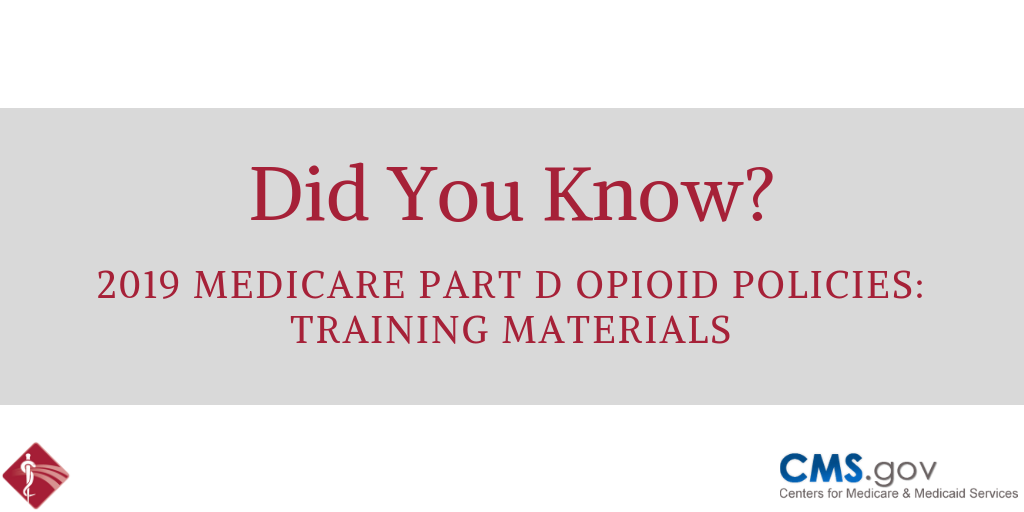
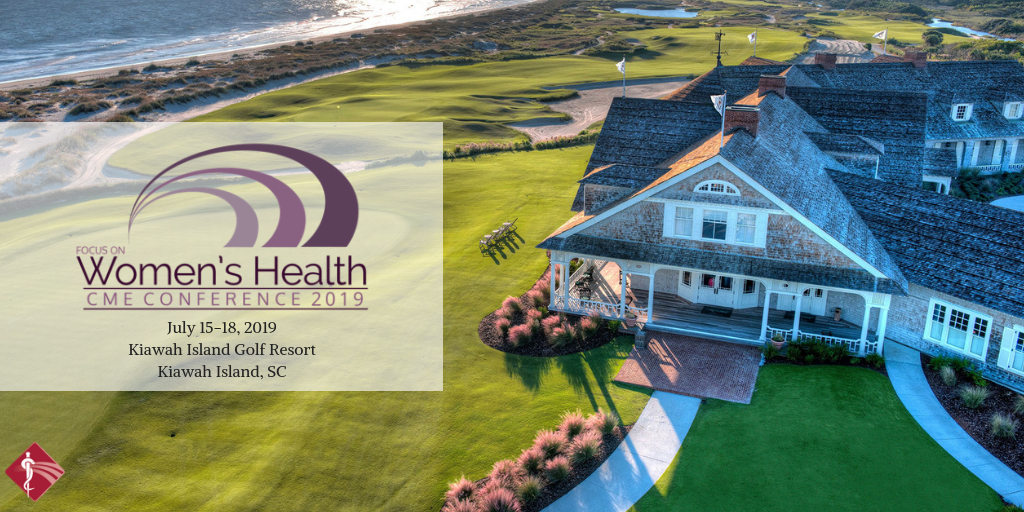
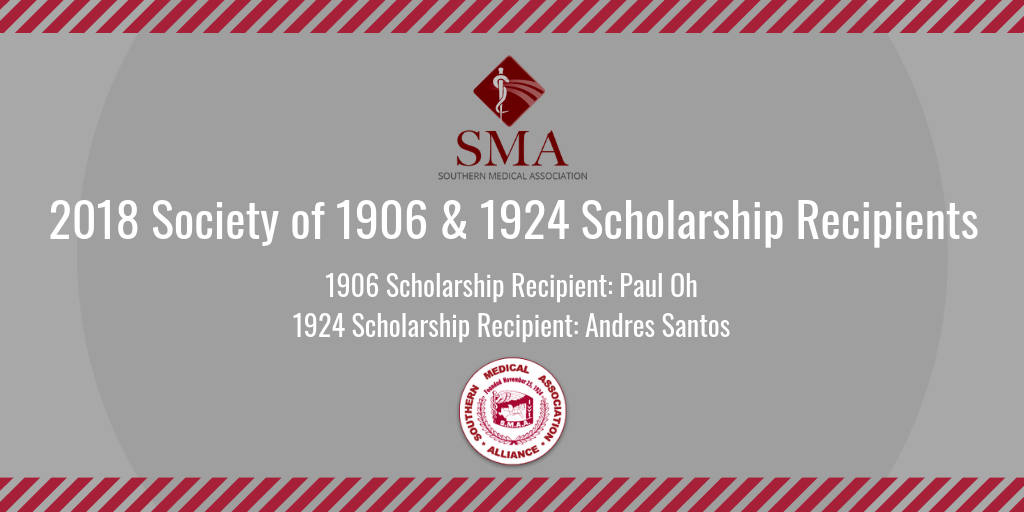
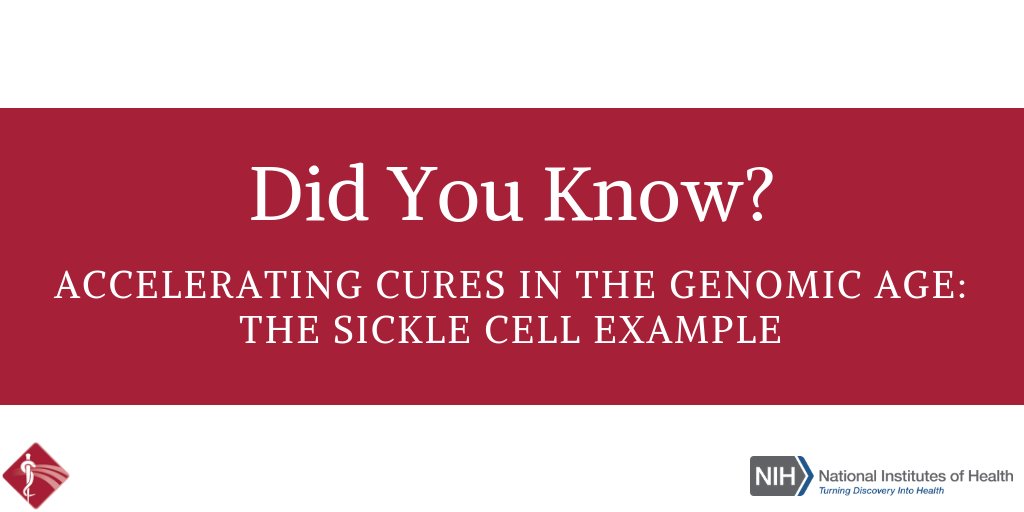
Forty-five years ago, when I was a first-year medical student, a lecturer introduced me to a young man with sickle cell disease (SCD). Sickle cell disease is the first “molecular disease”, with its cause having been identified decades ago. That helped me see the connection between the abstract concepts of molecular genetics and their real-world human consequences in a way no textbook could. In fact, it inspired some of my earliest research on human hemoglobin disorders, which I conducted as a postdoctoral fellow.
Today, I’m heartened to report that, thanks to decades of biomedical advances, we stand on the verge of a cure for SCD. While at the American Society of Hematology meeting in San Diego last week, I was excited to be part of a discussion about how the tools and technologies arising from the Human Genome Project are accelerating the quest for cures.
The good news at the meeting included some promising, early results from human clinical trials of SCD gene therapies, including new data from the NIH Clinical Center. Researchers also presented very encouraging pre-clinical work on how gene-editing technologies, such as CRISPR, can be used in ways that may open the door to curing everyone with SCD. In fact, just days before the meeting, the first clinical trial for a CRISPR approach to SCD opened.
One important note: the gene editing research aimed at curing SCD is being done in non-reproductive (somatic) cells. The NIH does not support the use of gene editing technologies in human embryos (germline). I recently reiterated our opposition to germline gene editing, in response to an unethical experiment by a researcher in China who claims to have used CRISPR editing on embryos to produce twin girls resistant to HIV.
SCD affects approximately 100,000 people in the United States, and another 20 million worldwide, mostly in developing nations. This inherited, potentially life-threatening disorder is caused by a specific point mutation in a gene that codes for the beta chain of hemoglobin, a molecule found in red blood cells that deliver oxygen throughout the body. In people with SCD, the mutant hemoglobin forms insoluble aggregates when de-oxygenated. As a result the red cells assume a sickle shape, rather than the usual donut shape. These sickled cells clump together and stick in small blood vessels, resulting in severe pain, blood cell destruction, anemia, stroke, pulmonary hypertension, organ failure, and much too often, early death.
The need for a widespread cure for SCD is great. Since 1998, doctors have used a drug called hydroxyurea to reduce symptoms, but it can cause serious side effects and increase the risk of certain cancers. Blood transfusions can also ease symptoms in certain instances, but they too come with risks and complications. At the present time, the only way to cure SCD is a bone marrow transplant. However, transplants are not an option for many patients due to lack of matched marrow donors.
The good news is that novel genetic approaches have raised hopes of a widespread cure for SCD, possibly even within five to 10 years. So, in September, NIH’s National Heart, Lung, and Blood Institute launched the Cure Sickle Cell Initiative to accelerate development of the most promising of these next generation of therapies
At the ASH meeting, that first wave of this progress was evident. A team led by NHLBI’s John Tisdale, in collaboration with Bluebird bio, Cambridge, MA, was among the groups that presented impressive early results from human clinical trials testing novel gene replacement therapies for SCD. In the NIH trial, researchers removed blood precursor cells, called hematopoietic stem cells (HSCs), from a patient’s own bone marrow or bloodstream and used a harmless virus to insert a sickle-resistant hemoglobin gene. Then, after a chemotherapy infusion to condition the patient’s existing bone marrow, they returned the corrected cells to the patient.
So far, nine SCD patients have received the most advanced form of the experimental gene therapy, and Tisdale presented data on those who were farthest out from treatment [1,2]. His team found that in the four patients who were at least six months out, levels of gene therapy-derived hemoglobin were found to equal or exceed their levels of SCD hemoglobin.
Very cool science, but what does this mean for SCD patients’ health and well-being? Well, none of the gene therapy trial participants have required a blood transfusion during the follow-up period. In addition, improvements were seen in their hemoglobin levels and key markers of blood-cell destruction (total bilirubin concentration, lactate dehydrogenase, and reticulocyte counts) compared to baseline. Most importantly, in the years leading up to the clinical trial, all of the participants had experienced frequent painful sickle crises, in which sickled cells blocked their blood vessels. No such episodes were reported among the participants in the months after they received the gene therapy.
Researchers did report that one patient receiving this form of gene therapy developed myelodysplastic syndrome (MDS), a serious condition in which the blood-forming cells in the bone marrow become abnormal. However, there is no indication that the gene replacement technology itself caused the problem, and MDS has previously been linked to the chemotherapy drugs used in conditioning regimens before bone marrow transplants.
The NIH trial is just one of several clinical trials for SCD that are using viral vectors to deliver a variety of genes with therapeutic potential. Other trials actively recruiting are led by researchers at Boston Children’s Hospital, Cincinnati Children’s Hospital, and the University of California, Los Angeles.
While it’s hoped that genes inserted by viral vectors will provide long-lasting or curative treatment, other researchers are betting that new gene-editing technologies, such as CRISPR, will offer the best chance for developing a widespread cure for SCD. One strategy being eyed by these “gene editors” is to correct the SCD mutation, replacing it with a normal gene. Another strategy involves knocking out certain DNA sequences to reactivate production of fetal hemoglobin (HbF).
The HbF protein is produced in the developing fetus to give it better access to oxygen from the mother’s bloodstream. But shortly after birth, the production of fetal hemoglobin shuts down, and the adult form kicks in. Adults normally have very low levels of fetal hemoglobin, which makes sense. However, from genome-wide association studies of human genetic variation, we know that that actual levels of HbF are under genetic control.
A major factor has been mapped to the BCL11A gene, which has subsequently been found to be a master mediator for the fetal to adult hemoglobin switch. Specifically, variations in a red cell specific enhancer of BCL11A affect an adult’s level of HbF— levels of BCL11A protein lead to higher amounts of fetal hemoglobin. Furthermore, it’s been known for some time that rare individuals keep on producing relatively high levels of hemoglobin into adulthood. If people with SCD happen to have a rare mutation that keeps fetal hemoglobin production active in adulthood (the first of these was found as part of my postdoctoral research), their SCD symptoms are much less severe.
Currently, two groups—CRISPR Therapeutics/Vertex Pharmaceuticals and Sangamo Therapeutics/Bioverativ—are gearing up to begin the first U.S. human clinical trials of gene-editing for SCD within the next few months. While they employ different technologies, both approaches involve removing a patient’s HSCs, using gene editing to knock out the BCL11A red cell enhancer, and then returning the gene-edited cells to the patient. The hope is that the gene-edited cells will greatly boost fetal hemoglobin production, thereby offsetting the effects of SCD.
All of this is exciting news for the 100,000 people living in the United States who have SCD. But what about the 300,000 babies born with SCD every year in other parts of the world, mostly in low- and middle-income countries?
The complicated, high-tech procedures that I just described may not be practical for a very long time in places like sub-Saharan Africa. That’s one reason why NIH recently launched a new effort to speed the development of safe, effective genome-editing approaches that could be delivered directly into a patient’s body (in vivo), perhaps by infusion of the CRISPR gene editing apparatus. Recent preclinical experiments demonstrating the promise of in vivo gene editing for Duchenne muscular dystrophy make me optimistic that NIH’s Somatic Cell Genome Editing Program, which is hosting its first gathering of investigators this week, will be able to develop similar approaches for SCD and many other conditions.
While moving forward in this fast-paced field, it is important that we remain ethical, but also remain bold on behalf of the millions of patients with genetic diseases who are still waiting for a cure. We must continue to assess and address the very serious ethical concerns raised by germline gene editing of human embryos, which will irreversibly alter the DNA instruction book of future children and affect future generations. I continue to argue that we are not ready to undertake such experiments.
But the use of gene editing to treat, perhaps even to cure, children and adults with genetic diseases, by correcting the mutation in their relevant tissues (so-called somatic cell gene editing), without risk of passing those changes on to a future generation, holds enormous promise. Somatic cell gene editing is associated with ethical issues that are much more in line with decades of deep thinking about benefits and risks of therapeutic trials.
Finally, we must recognize that somatic cell gene editing is a profoundly promising approach not only for people with SCD, but for all who are struggling with the thousands of diseases that still have no treatments or cures. Real hope for cures has never been greater.
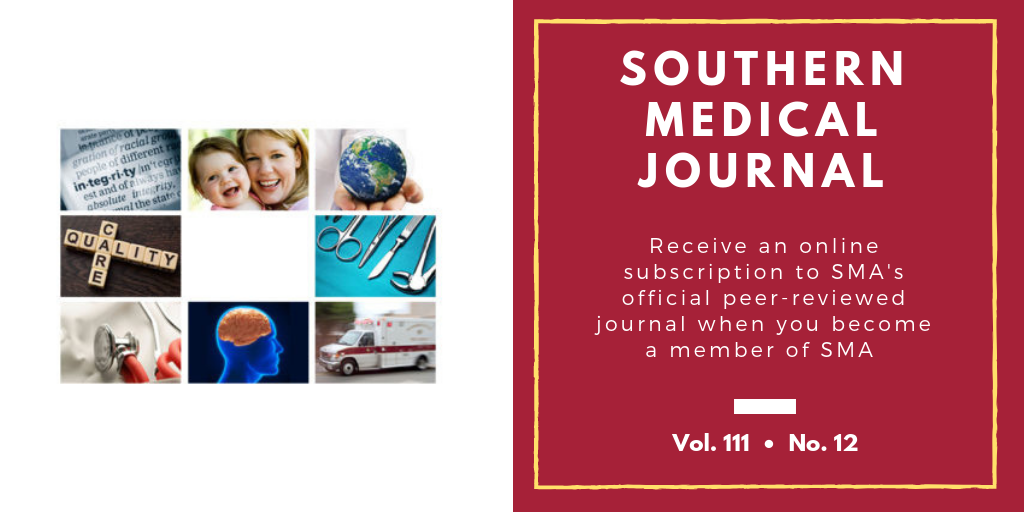
The Southern Medical Journal is the official, peer-reviewed journal of the Southern Medical Association. It has a multidisciplinary and inter-professional focus that covers a broad range of topics relevant to physicians and other healthcare specialists, including medicine; surgery; women’s and children’s health; mental health; emergency and disaster medicine; public health and environmental medicine; bioethics and medical education; and quality health care, patient safety, and best practices.
Prehospital Airway Management in Iraq and Afghanistan: A Descriptive Analysis
Steven G. Schauer, MAJ, DO, MS, Jason F. Naylor, MAJ, PA-C, Joseph K. Maddry, MAJ, MD, Denise M. Beaumont, COL, DNAP, CRNA, Cord W. Cunningham, LTC, MD, MPH, Megan B. Blackburn, PhD, and Michael D. April, MAJ, MD, DPhil
Commentary on “Prehospital Airway Management in Iraq and Afghanistan: A Descriptive Analysis”
G. Richard Holt, MD, MSE, MPH, MABE, DBioethics
Bioethics and Medical Education
Physician Advance Care Planning Experiences and Beliefs by General Specialty Status and Sex
Marjorie A. Bowman, MD, MPA, Kaitlyn Steffensmeier, MD candidate 2018, Marisa Smith, MD candidate 2018, and Adrienne Stolfi, MSPH
Medical Student H&Ps: Do You Have to Observe Them All At Once?
David M. Mills, MD, Michele K. Friesinger, MA, Sherron M. Jackson, MD, and Patricia G. McBurney, MD
Teaching to Teach: An Effective and Feasible Teaching Curriculum for Internal Medicine Interns
Anna K. Donovan, MD, MS, David R. Linz, MD, Doris M. Rubio, PhD, Melissa A. McNeil, MD, MPH, and Carla L. Spagnoletti, MD, MS
Stress Electrocardiography vs Radionuclide Myocardial Perfusion Imaging among Patients Admitted for Chest Pain: Comparison of Teaching and Nonteaching Hospital Services
Karishma Samtani, MD, Abdulfatah Issak, MD, Jared Liston, MD, Ronald J. Markert, PhD, and Dean Bricker, MD
Women's & Children's Health
Maternal/Perinatal Outcome in Women with Sickle Cell Disease: A Comparison of Two Time Periods
John N. Chang, MD, Everett F. Magann, MD, Sarah A. Novotny, MD, Chad E. Cooley, MD, C. Heath Gauss, MS, Marc R. Parrish, MD, and John C. Morrison, MD
Adverse Events in the Efficacy of Crotalidae Polyvalent Immune Fab Antivenom vs Placebo in Recovery from Copperhead Snakebite Trial
Michael E. Mullins, MD, Charles J. Gerardo, MD, Sean P. Bush, MD, S. Rutherfoord Rose, PharmD, Spencer Greene, MD, Eugenia B. Quackenbush, MD, Brandon Lewis, DO, Victoria E. Anderson, MPH, Kurt C. Kleinschmidt, MD, Richard B. Schwarz, MD, Nathan P. Charlton, MD, Eric A. Toschlog, MD, Kapil Sharma, MD, David A. Denning, MD, and Eric J. Lavonas, MD
Surgery & Surgical Specialties
Invasive Mechanical Ventilation
James M. Walter, MD, Thomas C. Corbridge, MD, and Benjamin D. Singer, MD
Medicine and Medical Specialties
Uremic Pericarditis: Distinguishing Features in a Now-Uncommon Clinical Syndrome
Daniel Restrepo, MD, Muthiah Vaduganathan, MD, MPH, and Andrew Z. Fenves, MD
Influences on Primary Care Provider Imaging for a Hypothetical Patient with Low Back Pain
Hai H. Le, Matthew DeCamp, Amanda Bertram, Minal Kale, and Zackary Berger
Demographic and Practice Characteristics of Physicians Who Care for Medically Underserved People: A National Survey
Jonathan J. Labbe, BA, Hyo Jung Tak, PhD, Junmo Kwon, Thomas Joseph, MD, Joseph Abraham, MD, and John D. Yoon, MD
Mental Health
A Misguided Venture: Presidential Fitness and the Duty to Warn
Charles G. Kels, JD, and Lori H. Kels, MD, MPH
Commentary on “A Misguided Venture: Presidential Fitness and the Duty to Warn”
Manuel Cepeda, MD
Impact of an Innovative Psychiatric Consultation Liaison Model on Provider Satisfaction with Care of Behaviorally Complex Patients
Linden Spital, MSN, CRNP, Robert Chang, MD, and Anupama Goyal, MBChB, MPHsma

1st Place: Stephen Petty, DO -- Cerebrovascular Outcomes in Patients with Infective Endocarditis Receiving Anticoagulation Therapy
2nd Place: Charmee Mehta, BSPH -- Relation between Childhood Weight Status and Hearing Loss: A Large Sample Cross-Sectional Study
3rd Place: Tracey Dabal, MD -- Long Term Efficacy and Safety of Baricitinib in the Treatment of Rheumatoid Arthritis: A Systematic Review and Meta-Analysis

1st Place: Zuzana Talbot, MD, PGY3 Resident -- Severe Sepsis and Wet Gangrene Caused by Shewanella algae
2nd Place: Yashas Nathani, MD, PGY4 Fellow -- Abdominal Mass(es) in a Female Pediatric Patient
3rd Place: Sarah A Katchen, BS -- How Do Patients Perceive the Character of Care They Receive For Ambulatory Care-Sensitive Conditions in the Emergency Department?

1st Place: Eyad Almallouhi, MD, PGY3 Resident -- Door In Door Out and Transportation Times in Two Telestroke Networks
2nd Place: Stephen Petty, DO -- Cerebrovascular Outcomes in Patients with Infective Endocarditis Receiving Anticoagulation Therapy
3rd Place: Sarah A Katchen, BS, Medical Student -- How Do Patients Perceive the Character of Care They Receive For Ambulatory Care-Sensitive Conditions in the Emergency Department?

Stephen Petty, DO -- Cerebrovascular Outcomes in Patients with Infective Endocarditis Receiving Anticoagulation Therapy
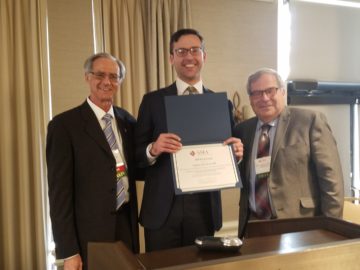
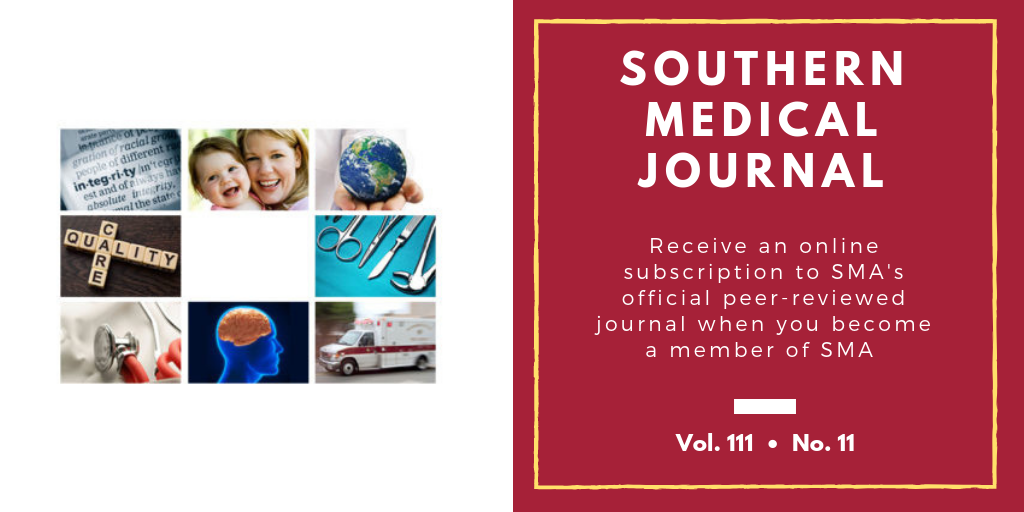
The Southern Medical Journal is the official, peer-reviewed journal of the Southern Medical Association. It has a multidisciplinary and inter-professional focus that covers a broad range of topics relevant to physicians and other healthcare specialists, including medicine; surgery; women’s and children’s health; mental health; emergency and disaster medicine; public health and environmental medicine; bioethics and medical education; and quality health care, patient safety, and best practices.
Public Health & Environmental Medicine
Potential Provider Oversupply and Underserved Areas: The Future of Alabama Medicine
Kelly R. Warren, MSW, MPH, Bernard H. Eichold, II, MD, DrPH, and Elizabeth Morrissette, AB
Blood Pressure, HIV, and Cocaine Use Among Ethnically and Racially Diverse Individuals
Manasi Soni, MPH, Violeta J. Rodriguez, MSEd, Suat Babayigit, MSEd, Deborah L. Jones, PhD, MEd, and Mahendra Kumar, PhD
Medicine & Medical Specialties
Late-Stage Melanoma: Be Sure to Screen Uninsured, Unmarried Men
Virginia L. Valentin, DrPH, PA-C, Wayne Sanderson, PhD, MS, Susan Westneat, MA, and Eric Durbin, DrPH, MS
Prevalence and Impact of Diabetes Mellitus on the Frozen Shoulder
Per H. Gundtoft, MD, PhD, Anne K. Kristensen, DC, Mikkel Attrup, MD, Jette W. Vobbe, MD, Torben Luxhøi, MD, Flemming G. Rix, MD, Per Hölmich, MD, DMSc, and Lilli Sørensen, MD
Role of Rifaximin in Spontaneous Bacterial Peritonitis Prevention
Ashley Oliver, PharmD, Mark Wong, PharmD, and Chelsea Sanchez, PharmD
Surgery & Surgical Specialties
Protocol to Improve Genotyping of Non-Small-Cell Lung Cancer Diagnosed Using EBUS-TBNA
Christina R. Bellinger, MD, Deepankar Sharma, MD, Travis Dotson, MD, Jimmy Ruiz, MD, Graham Parks, MD, and Edward F. Haponik, MD
Quality Care & Patient Safety
Outcomes and Predictors of Readmissions with GI Bleeding in Patients with Left Ventricular Assist Devices
Rushikesh Shah, MD, and Emad Qayed, MD, MPH
Integration of Personalized Health Planning and Shared Medical Appointments for Patients with Type 2 Diabetes Mellitus
Connor Drake, MPA, Caroline Meade, BS, Sharon K. Hull, MD, MPH, Ashley Price, PhD, MPH, and Ralph Snyderman, MD
Bioethics & Medical Education
Differences in Medical Students’ Academic Performance between a Pass/Fail and Tiered Grading System
Brittany Ange, MS, Elena A. Wood, MD, PhD, Andria Thomas, PhD, and Paul M. Wallach, MD
On “Women’s Health Curriculum for Medical Students”
Apoorva Kumar and Jai Mathur
Author’s Response
Maryam Sattari, MD, MS
Obesity and Weight-Biased Shaming in South Carolina: A Medical Student’s Perspective
Jessica Patrizi, BS, and Taral R. Sharma, MD
Women's & Children's Health
OPEN ACCESS: Vaginal Anatomy on MRI: New Information Obtained Using Distention
Alan H. Appelbaum, MB BCh BAO, Jeffrey K. Zuber, MA, Roberto Levi-D’Ancona, MD, and Harris L. Cohen, MD
Effects of Respiratory Syncytial Virus Infection in Infancy on Asthma and Respiratory Allergy in 6-Year-Old Children
Panagiota Kitsantas, PhD, and Lavanya Nirmalraj, MBBS, MS
Mental Health
Resource Utilization with the Use of Seclusion and Restraint in a Dedicated Emergency Psychiatric Service
Christina Terrell, MD, Kanwar Brar, MD, Sharon Nuss, MS, and Rif S. El-Mallakh, MD

 The Southern Medical Association (SMA) is proud to announce the installation of David W. Avery, MD, as President for 2018-2019. Established in 1906, SMA is a multidisciplinary, interprofessional medical association committed to providing physicians with education and information in order to provide quality patient care and lead the discussion on healthcare reform.
The Southern Medical Association (SMA) is proud to announce the installation of David W. Avery, MD, as President for 2018-2019. Established in 1906, SMA is a multidisciplinary, interprofessional medical association committed to providing physicians with education and information in order to provide quality patient care and lead the discussion on healthcare reform.
Dr. Avery is board certified in Family Medicine. He received his medical degree at SUNY Upstate Medical University, in Syracuse, New York and completed his residency in Family Medicine at United Hospital Center in Clarksburg, West Virginia.
Dr. Avery has been a member of SMA since he was a resident. He has served in many leadership roles, and as a member of the Board for the last several years. In his acceptance speech, Dr. Avery said, “It is an honor and a privilege to be the President of the Southern Medical Association; our mission is to improve quality of patient care through multidisciplinary, interprofessional education. We cannot do this without you, our members.”
Dr. Avery has a very distinguished career serving in leadership. He has served in many leadership positions of the West Virginia State Medical Association including President. He served on the Board of Directors, as Legislative Chair, Delegate, and President of the West Virginia Chapter of the American Academy of Family Physicians (AAFP). Dr. Avery served on the AAFP Board of Directors, as an AAFP Delegate to the AMA, and on several AAFP committees. He was active in the American Medical Association serving on several committees, as committee Chair, and state delegate. Dr. Avery is active in the State of West Virginia serving on several committees including the Governor’s GOHELP Committee. He is the current Medical Director of the Washington County Health Department.
In addition, Dr. Avery is an ACLS instructor, Regional Faculty of the American Heart Association, PALS Instructor, and an FAA Senior Aviation Flight Examiner.
Dr. Avery and his wife Elaine, reside in Vienna, West Virginia.
Thursday, November 8
Advanced Burn Provider Course
7:30 am – 5:00 pm
Location: Clipper – Conference and food functions
Location: Riverboat – Hands-on Lab
Rehabilitation Workshop
8:00 am – 5:00 pm
Lectures - Location: Windjammer
Breakout - Location: Mobile Bay 3
Pediatric Burns Symposium
2:00 – 5:00 pm
Location: Schooner
Early Registration and Exhibitor Set-up
We strongly recommend taking advantage of Thursday early registration or you could stand in line Friday morning when presentations are in progress. At registration you will receive your bag, badge, meeting guide, and other pertinent information related to the meeting.
2:00 – 7:00 pm
Location: Bon Secour Bay Foyer
Welcome to Mobile Reception
5:30 – 8:30 pm
Location: Jubilee Room - Renaissance Mobile Riverview Plaza Hotel
Friday, November 9
Registration, View Posters, Continental Breakfast with Exhibitors
7:00 – 7:30 am
Location: Bon Secour Bay
General Session
7:30 am – 5:30 pm
Location: Mobile Bay Ballroom
Lunch with the Exhibitors
12:00 – 1:30 pm
Location: Bon Secour Bay
Nurses’ Networking Luncheon
12:00 – 1:15 pm
Pick up lunch in Bon Secour Bay and proceed back to Mobile Bay Ballroom
Reception and Poster Rounds
5:30 – 7:30 pm
Location: Bon Secour Bay
Two complimentary beverage tickets will be included in your on-site registration packet in the back of your badge.
Saturday, November 10
Registration, View Posters, Continental Breakfast with Exhibitors
7:00 – 7:30 am
Location: Bon Secour Bay
General Session
7:30 am – 12:15 pm
Location: Mobile Bay Ballroom
Tour – Arnold Luterman Regional Burn Center
Ticketed event
2:00 – 4:00 pm
(Buses will load at 1:30 pm - Ticket required to board bus)
Farewell Masquerade Party
7:00 – 11:00 pm
Location: The GulfQuest Maritime Museum
DRESS: COCKTAIL
Sunday, November 11
General Session and Continental Breakfast
7:30 am – 12:00 noon
Location: Mobile Bay Ballroom
Abstracts
Oral abstracts are available by day on the conference website http://sma.org/burn (click on individual presentation). Poster abstracts are also available using the poster tab.
Hard copies of these materials will not be provided. If you prefer a paper copy, remember to print these handouts prior to your arrival.
Attendance Verification, Evaluation, and Claiming Credit
CME/CE credit is handled through an on-line process. Immediately upon your return from this conference, go to https://www.surveymonkey.com/r/2018_Burn_CME_Survey_Evaluation and select the lectures you attended. Your credit certificate will be created from the information you provide, and will be e-mailed within two weeks upon completion of the on-line form.
Southern Medical Association Staff Contact Information
Vicki Baugh
Cell phone: 205-317-3530
Email: vickib@sma.org
Kendra Blackmon
Cell phone: 205-492-5606
Email: kblackmon@sma.org



With cybersecurity attacks growing at an increasing rate, and new network and computer system vulnerabilities frequently being discovered, it is evident that healthcare cybersecurity threats are not going away. Regrettably, we saw more successful data breaches in 2017 than ever before, causing detrimental financial loss and legal consequences to the victims. The estimated total payouts and accumulated financial losses cost organizations over $5 billion, which is up from $1 billion in 2016. As information technology (IT) leaders it is beneficial to review in detail these past cases of successful data breaches to evaluate how the attacks occurred and, more importantly, how the organization could have prevented it. A critical element in defense against cybersecurity threats is to stay informed on the different types of attacks and the risks associated with them. As cyber-attacks continue to increase, it is also crucial that organizations stay current on the advancements in security standards and the tools that are available to protect their data and assets.
One major takeaway is to understand the role that the healthcare industry has in information security. Unfortunately, as cyber-attacks spread, the healthcare industry is a primary target. The Office of Civil Rights (OCR) reported that in 2017 healthcare organizations experienced over 300 breaches resulting in millions of individuals’ sensitive patient data being exposed or stolen. Technology has advanced the healthcare arena in so many ways to improve the efficiency of how practitioners and organizations share information and deliver treatments. However, because of the nature of the healthcare industry that hosts enormous amounts of sensitive patient data and their dependence on electronic medical records and systems, hospitals and health systems are highly susceptible targets with numerous risks. In 2017, of the top ten most massive cyber-attacks on healthcare organizations, 60% were a direct result of malicious software called Ransomware (https://www.hipaajournal.com/largest-healthcare-data-breaches-2017/). Over the past few years, ransomware has become a top priority and concern within the information security community, as the number of file-encryption malware that makes ransomware possible has risen significantly.
Ransomware is nothing new in the cybersecurity field; however, it has quickly become a leading threat. This type of malicious software works by encrypting all the system files that a computer relies on to work properly. Once infected, Ransomware can spread throughout an entire network to lock every single computer. This means that no computer on this network work, which can cause damaging financial consequences and operational downtime for any organization affected. This downtime consists of a complete halt to all business operations that require computer systems, which for the healthcare industry means no access to EHR systems. Moreover, as indicated by its name, the affected system can only be unlocked, or decrypted, by paying the “hacker” a specified ransom, typically paid in Bitcoin.[1] The sole intent is to hold hostage an organization’s data. Typical methods of Ransomware deployment are sent through unsolicited email attachments or links and embedded within applications files that would be passed on through a network. It is helpful for IT professionals and leaders in any organization to review case studies of previous ransomware incidents to discover what errors occurred and how the affected company could have prevented it, how they reacted after the breach was known, and what type of proactive planning should be implemented in their organization to handle these situations.
As the severe threats of cybersecurity continuously evolve and expand, the security methods and tools we use to protect our data must adapt. In 2018, the global network security market has begun making progressive advancements in technology and regulations to empower organizations to obstruct data breaches before they occur. Today most technology and services are provided in the cloud, and over half of employees use mobile devices or non-managed home computers to access their organization’s network.[2] Security solutions are being created to use the cloud as an advantage by protecting a personal network connection no matter where it is. One example of automating a line of defense before it reaches a network is a service called Cisco Umbrella™, which is a cloud-based security platform built into the foundation of the Internet to stop phishing and malware and to identify infected devices. This technology extends beyond merely detecting malicious content. It adapts to changes by processing millions of Internet connections requests a day to identify patterns that allow it to uncover potential threats automatically before their initiation and block connections before hitting the first victim. This idea of autonomous and intelligent network security protocols is a significant trend that paves the future of cybersecurity.
Despite the growing investments in cybersecurity, one of the most effective approaches an organization can take is to educate employees on security policies and awareness. Since human errors are still the leading cause of data breaches today, it is essential that an organization actively informs its employees that security is everyone’s responsibility. Network security can also benefit massively from effective communications and relationships between a company’s IT staff and employees. If employees are trained to spot suspicious content and emails on any of their devices, it is vital that they also share the information with their IT staff to investigate and quarantine, if needed. This communication should not be a burden for either party if they understand that it is their responsibility to the company. The predictions are that security awareness training grows exponentially over the next few years. Other than providing reference guides on common attacks and what they may look like, some policies that are important for employees to understand are authentication, access, and reporting procedures. Concerning authentications, users need to understand that passwords must be complex and confidential. If employees access the network on other non-managed devices, such as a work computer, they should implement password protection on every device. For important services, a company needs to implement two-factor authentication to ensure access is given to whom they say they are by knowing their password and providing another form of proof, such as a code sent to their cell phone.
In summary, it is essential always to remain vigilant and continue to layer new forms of cyber security protection to prevent your network from exposure to cybersecurity threats.
For more information about Coker Group and how we may be of service, call 678-832-2021 to speak with an experienced advisor.
[1] Bitcoin is a digital asset and a payment system, using peer-to-peer technology to operate with no central authority or banks. Managing transactions and the issuing of bitcoins is carried out collectively by the network, without an intermediary. Bitcoin is open-source; its design is public, and nobody owns or controls it.
[2] The cloud is a network of remote servers hosted on the Internet and used to store, manage, and process data in place of local servers or personal computers.
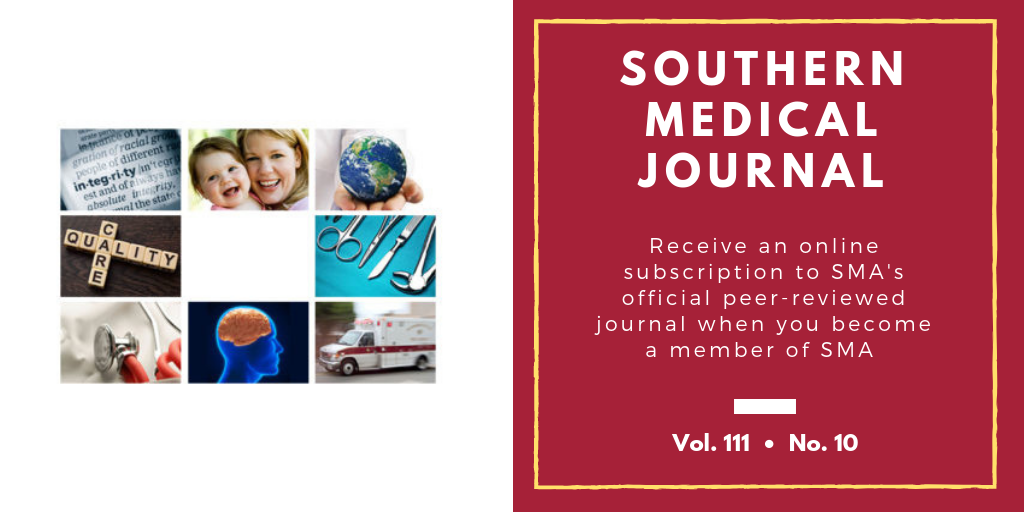
The Southern Medical Journal is the official, peer-reviewed journal of the Southern Medical Association. It has a multidisciplinary and inter-professional focus that covers a broad range of topics relevant to physicians and other healthcare specialists, including medicine; surgery; women’s and children’s health; mental health; emergency and disaster medicine; public health and environmental medicine; bioethics and medical education; and quality health care, patient safety, and best practices.
Provision of Buprenorphine to Pregnant Women by For-Profit Clinics in an Appalachian City
Jessica J. Walker, MD, and Martin E. Olsen, MD
Birth Weight and Risk of Childhood Acute Lymphoblastic Leukemia in Arizona, Illinois, and Kentucky
Frank D. Groves, MD, Brittany T. Watkins, PhD, Daniel J. Roberts, MD, Thomas C. Tucker, PhD, Tiefu Shen, MD, and Timothy J. Flood, PhD
Contemporary Geographic Variation and Sociodemographic Correlates of Hysterectomy Rates Among Reproductive-Age Women
Danielle R. Gartner, MS, Kemi M. Doll, MD, MSCR, Robert A. Hummer, PhD, MS, and Whitney R. Robinson, PhD, MSPH
Effects of Maternal Carbohydrate and Fat Intake on Fetal Telomere Length
Hamisu M. Salihu, MD, PhD, Korede K. Adegoke, PhD, MPH, MBBS, Lindsey M. King, MPH, CHES, CCRP, CTTS, Rana Daas, BS, Arnut Paothong, PhD, Anupam Pradhan, PhD, Muktar H. Aliyu, MD, DrPH, and Valerie E. Whiteman, MD+
OPEN ACCESS: Expenditures and Quality: Hospital- and Health System–Affiliated Versus Independent Physicians in Virginia
Louis F. Rossiter, PhD
Protocol to Improve Genotyping of Non-Small-Cell Lung Cancer Diagnosed Using EBUS-TBNA
Christina R. Bellinger, MD, Deepankar Sharma, MD, Travis Dotson, MD, Jimmy Ruiz, MD, Graham Parks, MD, and Edward F. Haponik, MD
Homicide in the South: Higher Rates Among Whites and Fewer Racial Disparities
Berna Buyukozturk, BS, Joanna Drowos, DO, MPH, Charles H. Hennekens, MD, DrPH, Maria C. Mejia de Grubb, MD, MPH, Jason L. Salemi, PhD, MPH, and Robert S. Levine, MD
Effects of Religious Involvement on HIV Management Outcomes Among HIV-Positive Adults in Central North Carolina
Appathurai Balamurugan, MD, DrPH, Martha Phillips, PhD, MPH, James P. Selig, PhD, Holly Thomas Yates, MD, Samuel Yates, BS, Julia Rushing, MStat, and Katherine R. Schafer, MD
Group Battlefield Acupuncture in Primary Care for Veterans with Pain
Daniel G. Federman, MD Krishnan Radhakrishnan, MD, PhD Lysette Gabriel, Lorie M. Poulin, RN, and Jeffrey D. Kravetz, MD
Mobile Health (mHealth) Use or Non-Use by Residents of West Virginia
Peter Giacobbi, Jr, PhD, Patrick Cushing, MS, Alexis Popa, BS, Treah Haggerty, MD, Adam Hansell, BA, and Cara Sedney, MD
Risk, Outcomes, and Predictors of Clostridium difficile Infection in Lymphoma: A Nationwide Study
Sanjay Bhandari, MD, Ramesh Kumar Pandey, MD, Sumit Dahal, MD, Muhammad Shahreyar, MD, Binod Dhakal, MD, Pinky Jha, MD, Thangam Venkatesan, MD, and Kia Saeian, MD, MS
A Professional Well-Being Continuum: Broadening the Burnout Conversation
Lauren Penwell-Waines, PhD, Mark Greenawald, MD, and David Musick, PhD
Commentary on “A Professional Well-Being Continuum: Broadening the Burnout Conversation”
Robert Zylstra, EdD, LCSW
Do Teaching-Focused Medical Schools Perpetuate the Thinking That Black Faculty Should Not Be Researchers?
Cassandra Acheampong, PhD, Kendall M. Campbell, MD, and José E. Rodríguez, MD
| Wednesday October 31, 2018 | |
| 6:00 am-7:00 pm | Meeting Registration Open for Badge Pick-up |
| 5:00-6:30 pm | SMA Welcome Reception |
| Thursday November 1, 2018 | |
| 6:30 am-5:30 pm | Meeting Registration Open for Badge Pick-up |
| 6:30-10:00 am | SMAA Project/Exhibit Set-up & Item Drop Off for Raffle |
| 10:00-11:00 am | SMAA Project/Exhibit Judging |
| 11:00 am-1:00 pm | Sign-In/Registration Open for SMAA General Session |
| 1:00-2:30 pm | SMAA General Session Part 1 |
| 2:30-2:45 pm | BREAK |
| 2:45-4:15 pm | SMAA General Session Part 2 |
| 4:30-5:30 pm | SMA Presidential Installation |
| 6:00-7:30 pm | ASH/SMA Reception |
| Friday November 2, 2018 | |
| 6:30 am-4:30 pm | Meeting Registration Open for Badge Pick-up |
| 8:00-9:30 am | SMAA Past President’s Breakfast (Invitation only) |
| 9:45 am-12:00 pm | SMAA General Session Part 3 |
| 12:00-12:30 pm | BREAK (raffle closes @ 12:00 – drawing held immediately after closing) |
| 12:30-2:00 pm | SMAA Presidential Installation & Awards Luncheon |
| 2:00-2:15 pm | SMAA General Session Part 4 |
| 2:30-3:30 pm | SMAA Post-Convention Meeting |
| 3:30 pm | Adjourn |
Exhibit set-up will be on Thursday, November 1 from 6:30-10:00 am.
All exhibits must be set by 10:00 am on Thursday, November 1 to be included in the judging.
All officers, committee chairs, and councilors should have written reports completed and sent to Wendy Erhart (wendy@sma.org) by September 30. Reports should be no longer than 300 words and should record the events, activities, and/or accomplishments of the office you represent.
Make plans to attend this annual event, during which the incoming 2018-19 SMA Alliance Officers and the SMA Alliance President, Dr. Donald Swikert, will be installed. The top awards for project exhibits will also be presented. Tickets are $70 per person and should be purchased in advance during the online registration process; on your mailed registration form; or by calling 800-423-4992, ext. 620.
Appropriate attire for the meeting is business casual for all sessions and events unless otherwise noted.
We will once again have our popular SMAA Raffle to benefit the Research & Education Endowment Fund. I encourage all SMAA members, Board Members, and State Alliance to support this fun event with both your donations of raffle items and purchase of raffle tickets onsite! All donations are tax deductible for the value of the item.
Items that have done well in the past are jewelry, sunglasses, wallets, purses and gift certificates. Many of our attendees will be traveling by air, so try to think of items that are easy to pack. Gift certificates that can be used in locations where any of our members could utilize them would be wonderful. If you have questions regarding the raffle, please email Wendy Erhart at the SMA headquarters offices – wendy@sma.org
Emma Borders will be preparing the raffle item tags/descriptions for tables. Please forward her info about your items, to include a description and value price – ejborders@bayou.com
I thank you in advance for your support of this wonderful fundraiser. God Bless you all and see you soon in Charleston!
Dr. Rose Kuplesky, Chair – Research & Education Endowment Fund
To register, visit our online registration system or call 800-423-4992, ext. 620. To make your room reservations, visit our online booking.
If you have questions, please contact Wendy Erhart at 800-423-4992, ext. 150 or wendy@sma.org.
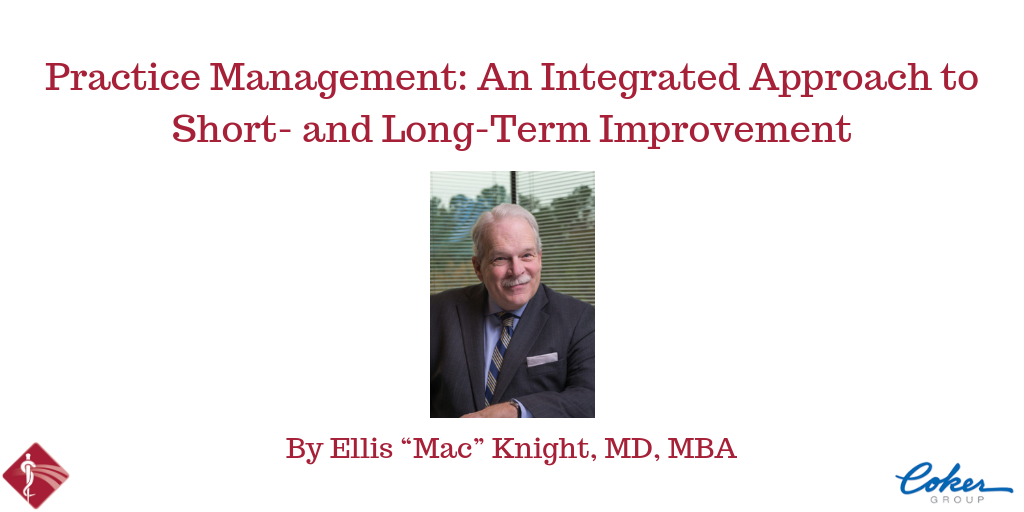
Physician practices are facing an unprecedented era of change. Multiple formidable challenges loom on the horizon to include:
Meeting these many challenges requires a systematic and integrated approach. This approach starts with the basics of practice management to include an assessment of the foundational underpinnings of a practice, e.g., the revenue cycle and the IT infrastructure with recommendations for improvements within each step or component in these fundamental areas.
Next, provider compensation plans must be aligned with reimbursements to ensure that financial incentives are driving the correct activities from the practice’s providers. For example, if the practice is receiving the majority of its third-party payments under a value-based reimbursement model, then providers should be receiving the majority of their compensation in return for driving higher quality and lowering costs.
Finally, the leadership model of the practice should be assessed and re-structured so that physicians and other providers are encouraged and rewarded for leading initiatives that improve quality and cost efficiency across the care continuum (pre-acute, acute, and post-acute).
The challenges and obstacles faced by physician practices in this time of tremendous change are daunting. However, Coker Group has extensive experience in customizing a systematic improvement plan for far-sighted practices that recognize that change is inevitable. Moreover, those that can convert demands for change into opportunities for improvement will be in the best position for success in the dynamic healthcare economy of the future.
Coker Group is an approved SMA partner. If you would like to learn more about how Coker Group could help your organization face the challenges of this era, call 678-832-2021 to speak with Dr. Mac Knight.
Article reprinted with permission by Coker Group.
What makes a good Medical Heritage project? Most project ideas fit into one of the following broad categories, included here as examples, but a noteworthy project may be anything that promotes awareness of our medical heritage or records otherwise unacknowledged events and significant contributions to the broad field of medicine within the SMA region.
Examples might feature the life of a past SMA/SMAA or AMA/AMAA president from your county or state, a hospital or medical school founder, a pioneer in a particular medical field, an early midwife or public health nurse, a medical war hero, or a country doctor. Include information on medicine and medical practice during the period in which they lived.
Put together, catalogue, or describe and publicize a collection of early instruments or textbooks. Show the extent of any Alliance contributions.
Examples may include documenting:
Give an account of the restoration process for a historical building, or artifact collection.
Publicize museums or archives which are located in your local community or state.
Describe the process undertaken to identify or create a marker for historical purposes.
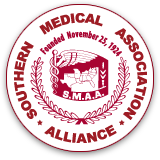

Medical Heritage is the oldest continuing project of the SMA Alliance, going back to the 1930 presidential acceptance speech of Mrs. S. A. Collum of Texas. “It has occurred to me that you might like to gather the medical romances of our Southland and publish them in a form presentable to school children” she said. A Research Committee was formed and began enthusiastically to gather many “medical romances“, or biographical sketches of outstanding physicians. The Alliance voted to publish and distribute them to schools and libraries in the Southern region.
In 1934 the SMA Journal agreed to publish in each issue a short biography of a medical “hero” from each member state in turn. 1935 saw the forerunner of our “access file,” a small printed booklet listing all the collected papers. These could be borrowed for use as programs. By 1936 the term Romance had become attached to the Research Committee, which was known as “Research and Romance” for the next 50 years.
The Alliance’s scholarly efforts were impressive. By 1949 it was necessary to buy a steel file to hold all the collected papers, which were shipped each year from chairman to chairman along with books and pamphlets, until permanent space was finally provided at the SMA headquarters.
A 1949 pamphlet, updated for a decade, listed the accumulated studies under the title “Suggestive Programs for the Woman’s Auxiliaries to the County Medical Societies“.
By the 1960’s, the practice of exhibiting projects at the annual meeting had begun, and in 1968 the Dr. and Mrs. Milford O. Rouse Trophy was first given for the most outstanding exhibit of Research and Romance of Medicine material.
In 1973 a committee was appointed to produce a handbook which, when printed in 1976, was packed with detailed information on terms, criteria, categories, prizes and forms. It also outlined the SMA Alliance’s committee structure for “Research and Romance”. The 1982 revision of this handbook showed the Alliance still giving cash prizes or $10 for first place in each category, with honorable mention for second place. The winner of the Rouse Trophy also got $10, and special certificates went to authors of books promoted by individual Alliances.
In 1986 the SMA Alliance changed the project name to Medical Heritage (Research and Romance), and the handbook was completely revised. In 1993 new Bylaws were adopted changing the structure of SMAA, and a committee revised the guidelines for Medical Heritage. The current handbook is based on several years experience with those guidelines.
All studies and projects must:
State Projects:
Each state may enter one state project per year. To qualify as a state project, the project must:
1. represent three or more counties in the state, or
2.be worked on by people from several counties, or
3.be on a state-wide institution or organization, or
4.be a multi-county survey of some type of institution.
It may also qualify if it will be made available to citizens of the entire state through a museum or etc.
County Projects:
Every county in each member state is entitled to enter one project per year. These will be judged in three size catagories based on number of county members.
If your project needs funding: Contact your state Medical Heritage Councilor. SMA generously provides an annual financial allotment for each state, and your Councilor may be able to allot some of it to you.
One or more of the following methods for presenting a project may be used. However, winners will not be chosen for the number of methods used, but for the best project.
Methods of Presentation include:
A Redbook is a red scrapbook that documents medical history through pictures, articles, etc. and is kept up-to-date by a state or county auxiliary/alliance and submitted periodically for judging. Only material added since the last submission can be judged, and must be clearly marked for the judges.
Whatever method is chosen, all exhibits must fit into a 36 inch x 36 inch x 36 inch space.
Folding Exhibit Boards (1/4 ” too high, but acceptable!) are available from the SMAA office for a nominal charge (see p. 10) or you may develop your own display.
An Auxiliary judging committee will review all project entries prior to Convention, and then examine each project at Convention. Judges will base their decisions on the following:
a. Thoroughness of description of project;
b. Quality of documentation and research and how well it is presented;
c. Quality of over-all planning and how well carried out;
d. Visual appeal, how understandably presented;
e. Suitability of methods of presentation chosen.
1. Certificates and ribbons (first, second and third place) are given for each of the following catagories:
a. State exhibits
b. Exhibits from counties with over 150 members.
c. Exhibits from counties of 75 to 150 members
d. Exhibits from counties with less than 75 members
2. The Dr. and Mrs. Milford O. Rouse Award is given for the most outstanding project, whether from a county or state.
3. Special commendation awards may be given.
A book will be kept at SMAA Headquarters in which the names of the award winners will be inscribed each year.

Special Note on Judging for Breast Cancer Awareness. Since Breast Cancer Awareness Month occurs in October, projects may be reported as plans by July.
Six copies of the project as completed must be brought to convention to be distributed to judges.
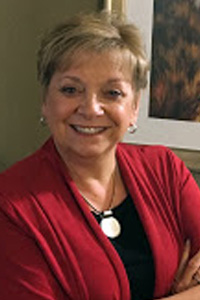

The alliance has a special place in my heart. I have been a member of the AMA Alliance for almost 30 years and a member of the SMA Alliance for close to 20 of those years. While the medical alliance does great things for community outreach, education and advocacy; it is the relationships, old and new, that I share with fellow members of the medical family which I cherish the most. It is wonderful to have friends throughout the country who have, in many cases, become an extended family. As an alliance member, I have served as President of Madison County Medical Alliance; President of the Alliance to the Medical Association of the State of Alabama, President Elect for Southern Medical Association Alliance and have served in leadership roles on a number of committees at the county, state and national level.
I thought I would take a moment and tell you a bit about myself. My husband, Eric, practices as a Cardiothoracic Anesthesiologist in Huntsville. We moved to Huntsville in 1993 and have grown roots in North Alabama! We are blessed to have three beautiful children–our twin daughters Nicole and Renee and our son Christopher. Nicole and her husband Blake are proud parents of Kayla (3) and Aubrey (9 months). Our son Christopher and his wife Rachel have a beautiful little boy, Rowan, who is looking forward to his sixth birthday and the arrival of his new baby sister in February, 2018. We were happy to welcome our daughter Renée back to Huntsville, who moved from Nashville to join the nursing staff in the Electrophysiology Lab at Huntsville Hospital. We are very blessed to have all of our family close by and are thrilled to be able to spend time with them and enjoy our grandchildren!
Most of my adult professional life has been spent in the practice of nursing, primarily working as an Emergency Room Nurse. I continue to volunteer as a nurse and board member with the North Alabama Medical Reserve Corps. I serve on the board as the liaison for the Madison County Medical Alliance and my primary role as a volunteer involves community education, outreach and emergency response in the event of a natural or manmade disaster. Another of my passions is legislative advocacy. Healthcare is in crisis right now and it’s so very important for members of the medical family to be actively involved and have a voice. It is equally important to share that voice with our patients, fellow citizens and community leaders. Having a place at the table when healthcare is restructured will be critical to the practice of medicine. As they say, “if you’re not at the table you’re on the menu!” That being said, I have embarked on a second career as a Congressional staff member for Congressman Mo Brooks who represents Alabama’s Fifth Congressional District. Needless to say, it has been an enlightening and educational experience thus far! Most recently, I have joined the staff of one of the local elementary schools to work as a school nurse in a per diem capacity.
Additionally, I have served as Past President of the Madison County Community Free Clinic Board of Directors; volunteered for the Madison/Marshall County American Red Cross and was proud to be recognized as one of their past Honorees; volunteered as a American Heart Association BLS and ACLS instructor; Honored to be chosen as the 1993 Auxillian of the Year for the Missouri State Medical Association Alliance; Past President of the St. Mary’s Hospital Auxiliary in Jefferson City, Mo. and last, but not least, as a parent, I loved serving as a Girl Scout and Boy Scout Leader, PTO volunteer and soccer mom!
I look forward to the year ahead and am deeply honored to serve as President of the Southern Medical Association Alliance!
Membership grants access to journals, courses and a slew of premium benefits.
Please consider supporting us by choosing an option below:
View Membership Options Make A Tax-Deductable Donation
No Thanks, take me to the site and don't show me this again.